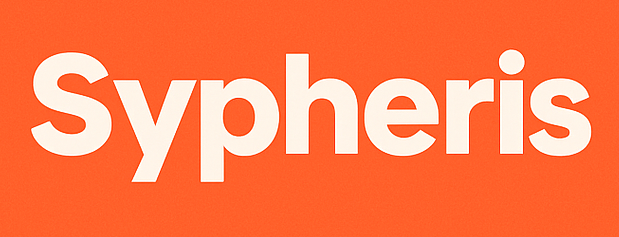Embarking on your educational journey in the United States is a thrilling adventure, filled with new academic challenges and vibrant cultural experiences. However, alongside the excitement comes a significant responsibility: navigating a new and complex financial landscape. From understanding a different currency and banking system to grappling with the high cost of living, managing finances for international students is a critical skill that will underpin your success and well-being. Mastering your money is just as important as mastering your coursework, and a solid financial plan is the key to a stress-free and enriching experience abroad.
The financial transition involves more than just converting your home currency. It requires building a new financial identity from the ground up. This includes creating a detailed budget that accounts for everything from tuition to daily coffee, opening your first US bank account, and understanding the American credit system. The US student budget tips 2025 you’ll find in this guide are designed to be practical and actionable, helping you make informed decisions from the moment you arrive.
This comprehensive guide will serve as your financial roadmap. We will walk you through the essential pillars of financial tips for US students, including creating a realistic budget, setting up your US banking essentials, and exploring scholarships to ease the financial burden. We’ll also provide insider strategies on how to save money on daily expenses without sacrificing your quality of life. Let’s build a foundation of financial confidence, so you can focus on what truly matters—your education and your American adventure.
The Core Pillars of Your Financial Foundation
Your financial success in the US rests on three key pillars: a smart budget, a reliable banking setup, and a proactive approach to finding funding. Mastering these areas will provide you with stability and control over your money.
1. Creating a Realistic Budget: Your Monthly Roadmap
A budget is not a restrictive document; it’s an empowering tool that tells your money where to go, instead of wondering where it went. Before you even arrive, you should have a clear estimate of your income and expenses.
- Estimate Your Income:
- Family Contributions: The primary source for most students. Have a clear, honest conversation with your family about how much they can provide and when you will receive the funds.
- Scholarships/Fellowships: If you have received a scholarship, understand its terms. Is it a one-time award or renewable? Does it go directly to the university or to you?
- On-Campus Employment: If you plan to work on-campus (up to 20 hours/week is permitted on an F-1 visa), estimate your potential earnings conservatively (e.g., 10 hours/week at the campus minimum wage).
- Track Your Expenses: Your expenses will fall into two categories:
- Fixed Costs (Non-Negotiable): These are regular, predictable expenses.
- Tuition and Fees
- Rent (on-campus dorm or off-campus apartment)
- Health Insurance (usually mandatory)
- Utilities (electricity, gas, water, if living off-campus)
- Phone and Internet Bill
- Variable Costs (Flexible): These are the areas where you have the most control.
- Groceries
- Transportation (public transit pass, gas if you have a car)
- Textbooks and Supplies
- Personal Care Items
- Entertainment and Social Activities
- Travel (for breaks or visiting home)
- Fixed Costs (Non-Negotiable): These are regular, predictable expenses.
- Use Budgeting Tools: Don’t try to track everything in your head. Leverage technology to make it easy. Apps like Mint or YNAB (You Need A Budget) are excellent tools that connect to your US bank account and automatically categorize your spending, showing you exactly where your money is going.
2. US Banking Essentials: Your Financial Hub
Relying on your home country’s bank account is not a viable long-term strategy. It will lead to high fees for currency conversion and international transfers. Setting up a US bank account should be one of your first priorities upon arrival.
- Opening a US Bank Account:
- Documents You’ll Need: While requirements can vary slightly, you will generally need:
- Your Passport and F-1 Visa
- Your Form I-20
- Proof of your US address (a lease agreement or a utility bill)
- Your university ID card
- Sometimes, a letter from your university’s international student office confirming your enrollment.
- Checking vs. Savings: You will likely open two types of accounts. A checking account is for your daily transactions—paying bills and making purchases with a debit card. A savings account is for holding money you don’t need immediately, like your emergency fund, and it earns a small amount of interest.
- Choosing a Bank: Look for banks that have branches and ATMs near your campus for convenience. Major banks like Chase, Bank of America, and Wells Fargo all offer student-specific accounts that often waive monthly maintenance fees.
- Documents You’ll Need: While requirements can vary slightly, you will generally need:
- Understanding Money Transfers:
- You will need a reliable and cost-effective way to receive money from home. Instead of traditional bank wire transfers, which can be slow and expensive, consider using modern financial technology services. Platforms like Wise (formerly TransferWise) or Remitly are popular among international students because they offer transparent fees and competitive exchange rates.
3. Scholarships and Financial Aid: Easing the Burden
While proving you have sufficient funds is a visa requirement, that doesn’t mean you should stop looking for ways to reduce your costs. Pursuing scholarships is a crucial part of international student money management.
- University-Specific Scholarships: Many universities offer scholarships specifically for international students. Check the financial aid or international admissions section of your university’s website for opportunities. These can be merit-based (based on your academic achievements) or need-based.
- External Scholarship Databases: Don’t limit your search to just your university. There are numerous external organizations that provide funding. Use free scholarship search engines to find opportunities you might be eligible for. Reputable databases include:
- InternationalStudent.com
- IEFA (International Financial Aid and College Scholarship Search)
- EducationUSA, a U.S. Department of State network, also provides information on funding sources.
- Government and Private Funding from Your Home Country: Many countries have government scholarships or private foundations dedicated to funding students who study abroad. Research the opportunities available from your own country before you leave.
How to Save Money as a US Student: Practical Strategies
Beyond the big-picture items, smart daily habits can lead to significant savings over time. Here are some proven strategies for stretching your dollar.
- Mastering Food and Grocery Costs:
- Cook at Home: This is the single biggest money-saver. Eating out in the US, even at fast-food restaurants, adds up quickly. Learning to cook simple, healthy meals will save you hundreds of dollars a month.
- Shop Smart: Buy groceries at budget-friendly supermarkets like Aldi, Trader Joe’s, or the local ethnic grocery store, which often has better prices on produce and spices. Buy generic store brands instead of expensive name brands.
- Never Shop Hungry: You’ll be more likely to make impulse purchases. Go with a list and stick to it.
- Utilize Campus Events: Keep an eye out for campus club meetings and events—they often offer free pizza or snacks!
- Slashing Housing and Utility Bills:
- Live with Roommates: Whether you live on-campus or off, having roommates is the most effective way to cut down on rent and utility costs.
- Be Energy Conscious: Simple habits like turning off lights when you leave a room, unplugging electronics when not in use, and being mindful of your heating and air conditioning usage can lower your monthly electricity bill.
- Getting Around on a Budget:
- Use Public Transportation: Most universities are located in areas with decent public transit systems (buses, subways). Your university may even offer a discounted semester pass.
- Walk or Bike: If you live close to campus, walking or biking is free, healthy, and environmentally friendly.
- Avoid Owning a Car (If Possible): The costs associated with car ownership—gas, insurance, parking permits, maintenance—are substantial. Avoid it unless absolutely necessary.
- The Power of Student Discounts:
- Always Carry Your Student ID: Your student ID is your key to savings. Many local businesses, from restaurants and clothing stores to movie theaters and museums, offer student discounts. Always ask!
- Use Discount Platforms: Sign up for free services like UNiDAYS and Student Beans. These platforms aggregate hundreds of online and in-store discounts specifically for students on brands like Apple, Nike, and more.
- Textbooks and Academic Supplies:
- Never Buy New if You Can Avoid It: The campus bookstore should be your last resort for textbooks. Look for used copies on Amazon or Chegg, or consider renting digital e-books for a fraction of the cost. Check your university’s library to see if they have a copy on reserve.
Frequently Asked Questions (FAQ)
How can an international student open a US bank account?
To open a US bank account, you will typically need to visit a bank branch in person. You should bring several documents with you: your passport with your F-1 visa, your Form I-20, proof of your US address (like a housing contract), and your student ID card. Some banks may also ask for an initial deposit. Look for “Student Checking” accounts as they usually have no monthly fees and lower minimum balance requirements.
What are the main financial options for international students?
The main financial options are personal/family savings, scholarships from your university or external organizations, and private student loans. International students are generally not eligible for US federal student aid. Some private lenders in the US offer loans to international students, but they almost always require a creditworthy US citizen or permanent resident as a co-signer.
How much money do I need to live comfortably as a student in the US?
The cost of living varies dramatically depending on the city. In a major coastal city like New York or San Francisco, you might need $2,000-$3,000 per month for living expenses (excluding tuition). In a smaller city in the Midwest or South, you might only need $1,000-$1,500 per month. The budget provided on your Form I-20 is a good official estimate to use for your planning.
Is it a good idea to get a credit card in the US?
Yes, getting a credit card can be a very good idea, as it is the primary way to build a US credit history. A good credit score is essential for renting an apartment without a co-signer or getting a car loan in the future. Start with a student credit card or a secured credit card. It is crucial to use it responsibly by paying the bill in full every month to avoid debt. You can explore some of the Best Credit Cards for Students on our site to see which options might be available to you.
What is the biggest financial mistake international students make?
The biggest mistake is failing to create and stick to a detailed budget. Many students underestimate the “small” daily costs of things like coffee, snacks, and transportation, which can add up to a significant amount over a month. Not tracking your spending can quickly lead to financial stress. The second biggest mistake is not fully understanding the rules around on-campus and off-campus work, which can lead to serious visa violations.
Taking control of your finances is a vital part of your journey as an international student. It builds discipline, reduces stress, and empowers you to make the most of every opportunity your US education has to offer.



